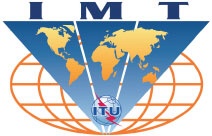WiBro Evolution: Would You Believe 149Mbps?
Posted by Sam Churchill on October 8th, 2008 The Electronics and Telecommunications Research Institute (ETRI) in South Korea, and Samsung Electronics announced plans to demonstrate next-generation WiMAX technologies at an upcoming ITU-R conference to be held in Seoul, Korea.
The Electronics and Telecommunications Research Institute (ETRI) in South Korea, and Samsung Electronics announced plans to demonstrate next-generation WiMAX technologies at an upcoming ITU-R conference to be held in Seoul, Korea.
The demonstration will stream HDTV-grade content at over 200 Mbps using a platform called WiBro Evolution.
In July 2004, South Korea’s Ministry of Information and Communications (MIC) required a harmonized version of the Korean Wireless Broadband (”WiBro”) standard under the IEEE 802.16e-2005, now a global standard.
Today Samsung is supplying 802.16e-2005 standard gear for Sprint’s Xohm rollout.
Soon, the International Telecommunications Union will define the IMT-Advanced as a “true” 4G standard which is expected to deliver 100Mbps (mobile) and up to 1 Gbps (fixed). Blessing by the ITU will transform a “4G” proposal into an official, international standard.
The WiMax camp (backed by the IEEE) and the LTE camp (backed by the 3rd Generation Partnership Project - 3GPP) are now prepping their candidates — 802.16m and LTE-Advanced, respectively.
Key features of ´IMT-Advanced´ (the proposed 4G standard under the ITU), include:
- a high degree of commonality of functionality worldwide
- compatibility of services within IMT and with fixed networks
- capability of interworking with other radio access systems
- high quality mobile services
- user equipment suitable for worldwide use
- user-friendly applications, services and equipment
- worldwide roaming capability
- enhanced peak data rates (100 Mbit/s for high and 1 Gbit/s for low mobility).
Cellular operators are extending LTE (not even officially a standard yet) while WiMAX supporters are developing 802.16m. Both want be the ITU’s IMT-Advanced standard.
WiBro Evolution will up the speed to a reported 149 Mbps (down) and 43 Mbps (up). ETRI plans to submit the core capabilities of WiBro Evolution as part of the IEEE 802.16m standard to be completed in 2010.
IMT-Advanced calls for very wide channel widths. The technology needs 40MHz and preferably up to 100MHz channel allocations, says Unstrung. Requirements of that kind are completely new territory for the cellular industry.
The ITU’s proposed IMT-Advanced standard is the brass ring — an opportunity for WiMax and LTE to merge into one integrated ITU “4G” standard. But opinions vary about the likelihood of the two camps blending their rival technologies. Merging cellular’s LTE with Mobile WiMAX for a unified “4G” approach is unlikely at this stage of the game, say some industry players.
Ron Resnick, the president and chairman of the WiMAX Forum, is unequivocal; “They are not going to harmonize,” he said flatly.
source : dailywireless.org




No comments:
Post a Comment